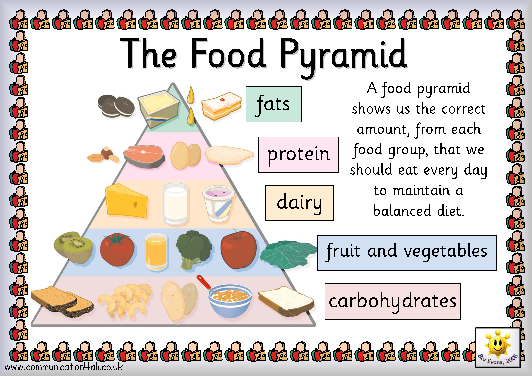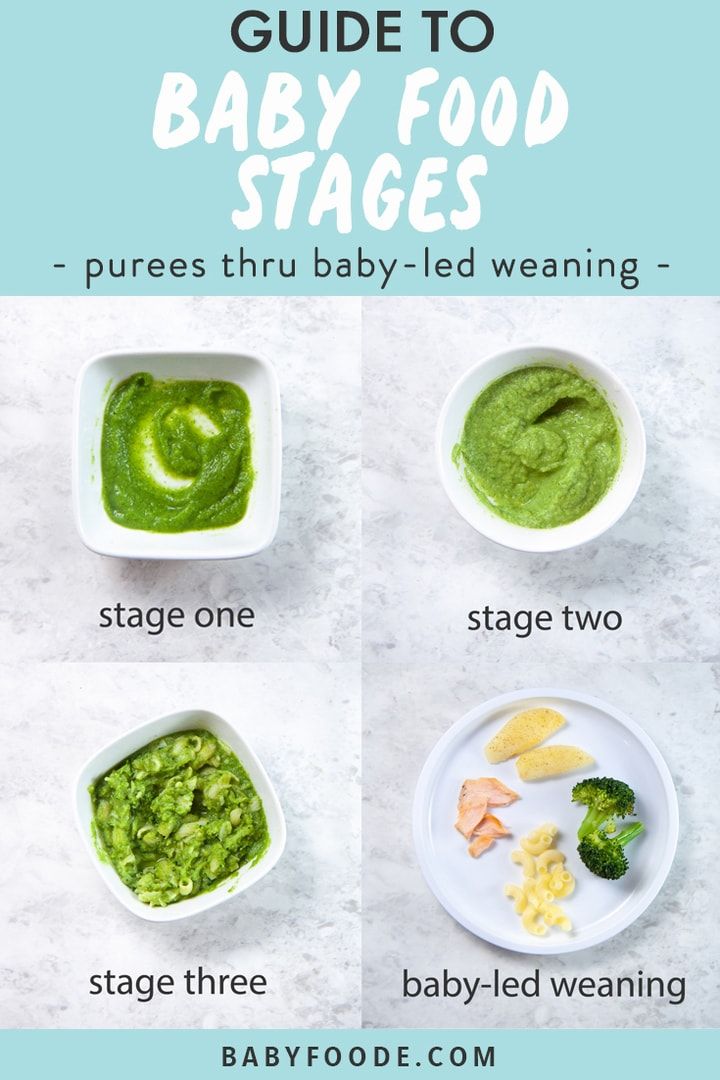Baby led weaning food schedule
Baby-led weaning: A complete guide to first foods
Starting solids is an exciting, messy, and sometimes nerve-wracking time for many parents. Using a baby-led weaning approach won’t help with the mess, but it may help relieve parental stress and help babies foster a healthy relationship with food. Keep reading for a step-by-step guide to getting started.
IN THIS ARTICLE:
What is baby-led weaning?
When to start baby-led weaning?
How to start baby-led weaning?
Top 6 benefits of baby-led weaning
Are there any risks of baby-led weaning?
Best baby-led weaning foods: Top first foods
Baby food charts for baby-led weaning
Baby-led weaning FAQ
What is baby-led weaning?
Baby-led weaning (BLW) is one way to introduce solids by focusing on infant self-feeding, and by serving the family’s table foods from the start. The term was popularized by Gill Rapley and Tracey Murkett, co-authors of the self-titled book in 2009. According to Rapley and Murkett, babies should learn to eat by sitting with family at mealtimes and receive plenty of opportunities to practice feeding on their own.
Some advocates argue purees are not part of a BLW approach, but it’s actually quite common for parents and nutrition and feeding professionals alike to practice a combination of both baby-led and traditional weaning.
The term “weaning” isn’t used to mean a quick transition away from breast milk or formula. All weaning is meant to complement breastmilk or formula intake and to slowly transition your baby to a solid foods diet. Until then, breastmilk and/or formula remain the primary source of nutrition until one year of age, and it’s important not to reduce these feedings once solids are introduced. Babies will naturally reduce their milk or formula feedings on their own as they begin to consume more solid food.
When to start baby-led weaning?
Baby-led weaning should begin at 6 months to ensure the baby's digestive and immune systems have enough time to properly develop. Additionally, your baby should show the following signs of readiness before beginning BLW:
Sits up independently with good head and neck control
Loss of tongue thrust reflex
Brings toys or other objects to their mouth
Shows an interest in table foods
How to start baby-led weaning?
Before you begin, make sure to check for signs of readiness (see above). If you have any questions regarding readiness, we recommend checking with your pediatrician before starting solids.
Start slow
Eating is a skill that requires practice and time to master, much like crawling or walking.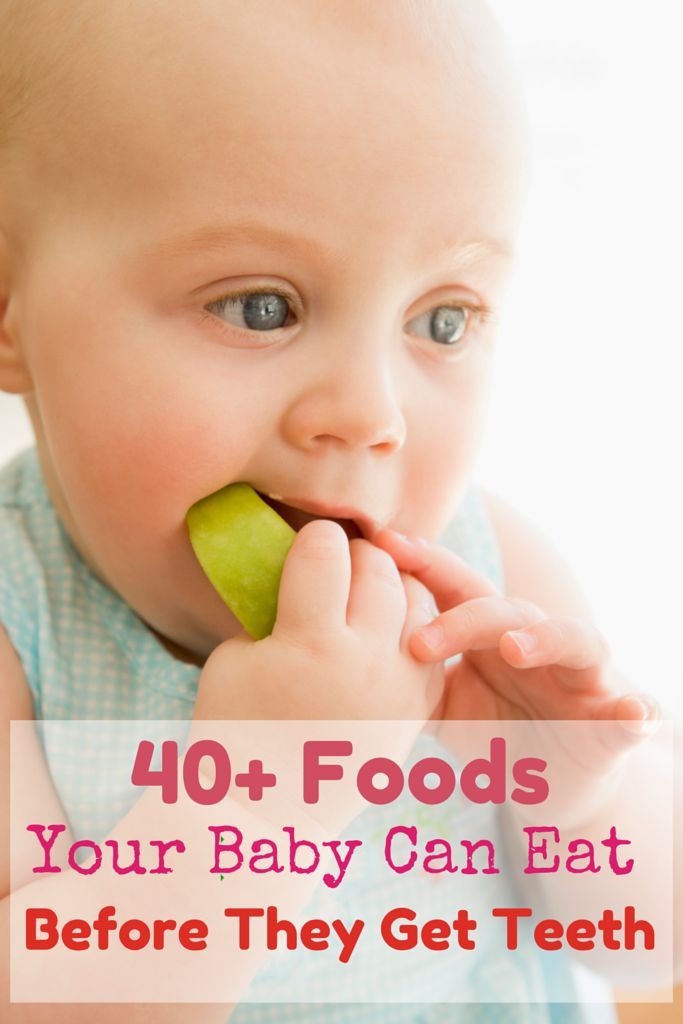 Start slowly by offering your baby one solid meal a day ideally as part of family mealtime. Family mealtime can be defined as at least one parent and child eating together. Choose a meal when your baby isn’t tired or hungry— this may vary from day to day!
Start slowly by offering your baby one solid meal a day ideally as part of family mealtime. Family mealtime can be defined as at least one parent and child eating together. Choose a meal when your baby isn’t tired or hungry— this may vary from day to day!
Set up a safe place to eat
The safest place for a baby to eat is in a highchair. They should be well-supported and able to freely move their arms and hands to reach food off the tray. Baby’s back should be straight, not reclined. Parents and caregivers should sit facing the baby.
Take your time
Give your baby ample time to explore and play with food in the beginning stages. Do what you can to make mealtimes enjoyable and fun for your baby. Do not try to distract your baby while they are eating.
Choose age-appropriate foods
BLW appeals to many parents because it doesn’t require special baby foods. However, family foods need to be prepared and served in a safe, age-appropriate way. Make sure any food served is soft and easily mashed between two fingers. Start with strips of food, about the size of an adult pinky, and progress to smaller diced foods as your baby’s feeding skills improve.
However, family foods need to be prepared and served in a safe, age-appropriate way. Make sure any food served is soft and easily mashed between two fingers. Start with strips of food, about the size of an adult pinky, and progress to smaller diced foods as your baby’s feeding skills improve.
Offer food without pressure
Baby-led weaning is just that—led by your baby! As a parent, it’s your job to provide food and opportunities to practice self-feeding. It is your baby’s job to decide if they will eat and what they will eat. Never put food into your baby’s mouth or try to make them eat more or less than they want.
Top 6 benefits of baby-led weaning
May lower the risk of obesity
This approach may reduce the risk of obesity later in life due to BLW infants' greater ability to regulate hunger and fullness cues. In fact, studies show toddlers who were weaned using BLW had a lower BMI and incidence of obesity than those who were traditionally spoon-fed.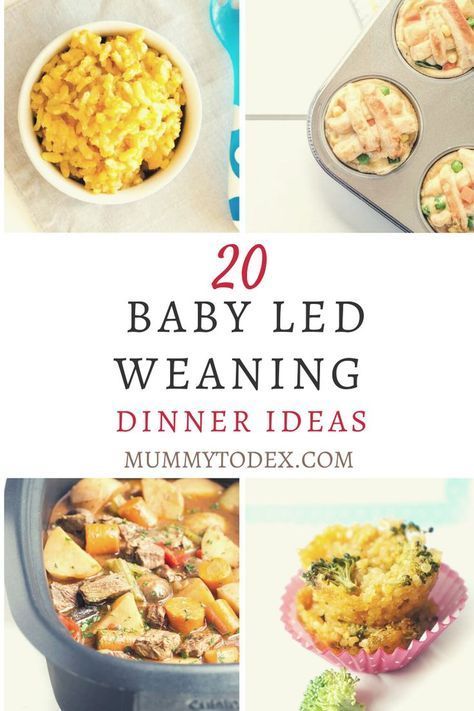 They were also less likely to eat in response to food stimuli, say being offered a snack at a sporting event if they weren’t hungry.
They were also less likely to eat in response to food stimuli, say being offered a snack at a sporting event if they weren’t hungry.
Exposure to a large variety of foods
Although studies aren’t conclusive, there’s reason to believe families who follow a baby-led style will expose their infant to a wider range of foods including more textures and flavors than traditional weaning. Consuming a larger variety of foods is associated with better diet quality and health outcomes.
Encourages development of motor skills
Self-feeding is a key component of BLW and provides babies with many opportunities to develop and practice both gross and fine motor skills. Exploring and picking up foods on their own increases the number of opportunities babies have to practice strength-building movements.
Reduces parental mealtime stress
One study surveyed mothers' attitudes about using a BLW approach and found that they reported the approach was simple, convenient, and easy to fit into family lifestyles and mealtimes. They also reported less stress around mealtimes and introducing foods to their infants.
They also reported less stress around mealtimes and introducing foods to their infants.
Increases favorable feeding practices
More and more research is examining the role of parental feeding practices on children’s future health outcomes. In general, practicing baby-led weaning may lead to more favorable feeding styles such as being less likely to restrict foods or pressuring children to eat. However, it isn’t clear if parents who choose BLW are just less likely to use negative feeding strategies or if BLW encourages the development of favorable feeding practices.
Saves time and money
Parents may save time if they are planning to make their own baby foods by simply serving family foods in a safe way. Additionally, the cost of store-bought baby foods tends to be high, so many families notice savings by not having to purchase these foods.
Are there any risks of baby-led weaning?
Overall, when practiced correctly, baby-led weaning is a safe and effective way to introduce solids to an infant. Research shows no greater risk of choking or nutrient deficiency for this method versus a more traditional weaning style. However, parents should be aware of the following concerns before starting.
Research shows no greater risk of choking or nutrient deficiency for this method versus a more traditional weaning style. However, parents should be aware of the following concerns before starting.
Mealtimes get messy
Infants who start consuming solids are going to get messy—there’s really no way around it! Part of learning to eat involves exploring and playing with food as well as sometimes missing their mouth. So if you are the type that can’t handle a mess, it might not be for you.
To make clean-up easier, feed your baby in just a diaper, invest in wipeable bibs, a BPA-free silicone suction bowl, and a washable splash mat for the floor to catch anything that falls. (Dogs are also great at this, but they're much more maintenance.)
Family foods may not always be suitable for infants
One of the best things about this method is that it doesn’t require a lot of extra cooking or food preparation. However, not all family foods may be suitable for infants such as fast food or meals with added sugars or salt.
However, not all family foods may be suitable for infants such as fast food or meals with added sugars or salt.
These types of foods may negatively impact infants’ immediate health, and may also set them up to prefer these types of foods later in life. While there’s nothing wrong with enjoying these foods in moderation, keep in mind you’ll need to have another option on hand for your baby.
Best baby-led weaning foods: Top first foods
While the majority of an infant’s nutritional needs will still be met by breastmilk or formula until about 1 year, complementary foods are still important in boosting an infant’s nutritional intake. For this reason, it’s recommended that a variety of foods be introduced into the diet as early as possible. Include foods from all food groups, not just fruits and vegetables, and add in foods rich in high-priority nutrients such as iron, protein, and fats whenever possible.
During the early stages of BLW, offer food that is easy for your baby to pick up and bring to their mouth.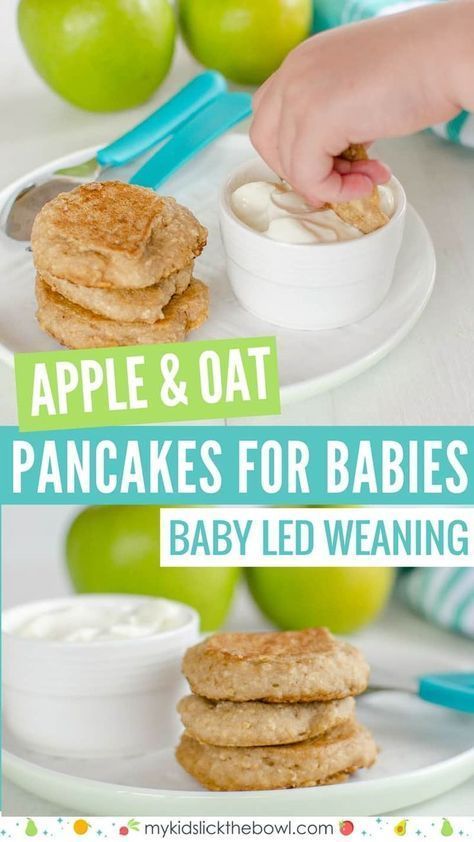 For example, a cooked zucchini stick or floret of broccoli (steamed, boiled, roasted, or stir-fried) can be easy for babies to grab without having to pinch food between their thumb and forefinger. Having food that’s easy to handle can make things less frustrating (and more fun) for everyone.
For example, a cooked zucchini stick or floret of broccoli (steamed, boiled, roasted, or stir-fried) can be easy for babies to grab without having to pinch food between their thumb and forefinger. Having food that’s easy to handle can make things less frustrating (and more fun) for everyone.
Iron-rich foods
Iron is responsible for carrying oxygen throughout the body to muscles and organs as well as supporting brain development in young children. Needs are increased early in life due to rapid growth. In order to make sure your baby is getting enough, try to include iron-rich food with every meal if possible.
Protein-rich foods
Protein provides the building blocks to support growth and development in babies and young children. Many protein foods are highly nutrient-dense as well, which is important for babies who only eat small amounts of food at a time.
Fat-rich foods
Don’t skimp on the fat! Babies need fat for energy, to help with nutrient absorption and certain fats, such as omega-3 fatty acids, are essential for brain development.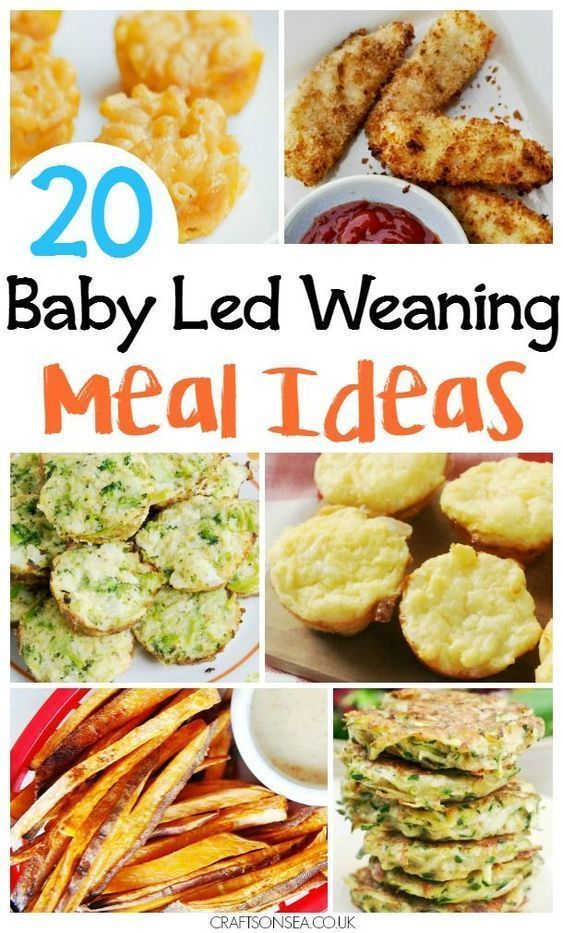
Easily incorporate fat into your baby’s meals by choosing full-fat dairy products, using olive oil or butter to prepare vegetables, or spreading nut butter thinly on toast or crackers.
Avocado
Fish
Full-fat yogurt
Full-fat cheese
Olive oil
Butter
Nut butter
Eggs
Fruits and vegetables
Fruits and vegetables are full of vitamins and minerals that help promote optimal growth and development. They also provide fiber and early exposure increases the likelihood that babies will continue to enjoy fruits and veggies later on in life.
Carrots (cooked)
Broccoli (cooked)
Butternut Squash (cooked)
Cauliflower (cooked)
Cucumbers
Zucchini (cooked)
Cherry Tomatoes
Sweet potatoes (cooked)
Potatoes (cooked)
Plums (very ripe)
Peaches (very ripe)
Apples (cooked)
Kiwi
Avocado
Banana
Raspberries
Blueberries
Strawberries
Pears (very ripe)
Grapes
Cantaloupe
Watermelon
Cherries (pitted)
Mango (very ripe)
Baby food charts for baby-led weaning: Sample feeding schedules
The charts below represent what a sample day could look like for a baby that age to help you with a weekly meal plan. But remember, you know your baby best and their day may not look exactly like this. Adapt the schedule in a way that works realistically for your family. Family meals are a cornerstone of BLW, so if it is easier to start with dinner instead of breakfast as suggested, do that. Each day might look a bit different and that’s okay too!
But remember, you know your baby best and their day may not look exactly like this. Adapt the schedule in a way that works realistically for your family. Family meals are a cornerstone of BLW, so if it is easier to start with dinner instead of breakfast as suggested, do that. Each day might look a bit different and that’s okay too!
Huckleberry tip:
If you’re out during the day, mealtime might end up falling close to nap time. If your baby is too sleepy to take interest in eating solids, it may make more sense to offer breastmilk or formula before a nap than to offer solids and make mealtime stressful. Remember, your baby is still getting the nutrition they need from breastmilk and/or formula.
As your child grows, expect to gradually introduce more meals with solids between their regular feedings of breastmilk/formula. That timeline will look something like this:
| 6 months | 1 solid meal per day |
| 7 - 9 months | 2 solid meals per day |
| 10 - 11 months | 3 solid meals per day |
| 12+ months | 3 solid meals, 2 snacks per day |
6 month baby-led weaning food chart
At 6 months, a baby should be eating 1 solid food meal a day. Food should be cooked until soft enough to mash between your fingers. It should be cut into strips, about the size of an adult pinky, or mashed and pre-loaded onto a spoon.
Food should be cooked until soft enough to mash between your fingers. It should be cut into strips, about the size of an adult pinky, or mashed and pre-loaded onto a spoon.
7 - 9 month baby-led weaning food chart
At 7 - 9 months, a baby should be eating 2 solid food meals a day. Food should be cooked until soft enough to mash between your fingers. Food may now be diced into small pieces or mashed and pre-loaded onto a spoon.
10 - 11 month baby-led weaning food chart
At 10 - 11 months, a baby should be eating 3 solid food meals a day. Food should be cooked until soft enough to mash between your fingers and cut into small pieces. Children at this age may start using anti-gag utensils more purposefully, but don't expect to put the splash mat away just yet.
12+ month baby-led weaning food chart
At 12 months, a baby should be eating 3 solid food meals a day and two snacks. Food should be cooked until soft enough to mash between your fingers and cut into small pieces. At this age, families may choose to introduce whole cow’s milk or an appropriate milk alternative. Talk to your pediatrician or a pediatric registered dietitian about what’s best for your family.
Food should be cooked until soft enough to mash between your fingers and cut into small pieces. At this age, families may choose to introduce whole cow’s milk or an appropriate milk alternative. Talk to your pediatrician or a pediatric registered dietitian about what’s best for your family.
Baby-led weaning FAQ
Q: Is baby-led weaning feasible?
A:
Absolutely! In fact, many parents find baby-led weaning to be simple and low stress. By ensuring your baby is served a variety of foods and continuing to offer breastmilk or formula on demand, it’s possible to meet their nutrient needs with a baby-led weaning approach.
Q: What age should I start baby-led weaning?
A:
Expect to begin around 6 months when your baby shows signs of readiness, such as being able to sit independently with good head and neck control, losing the tongue thrust, bringing toys or other objects to their mouth, and showing an interest in table foods.
Q: Is there a risk for my baby to choke?
A:
There is a risk for choking as infants begin to learn to eat with any method. Research has not shown a baby-led weaning approach to be associated with a higher risk of choking over other weaning methods. In order to lessen the risk of choking, choose safe foods and cook them well, and always watch your baby when they are eating.
Q: Do babies need teeth for baby-led weaning?
A:
Nope! Babies can chew well enough for solid foods with just their gums as long as food is prepared soft enough.
Q: How do I know when baby has had enough?
A:
Babies will indicate they are done eating in a few ways — you just have to watch! When a baby is done with a meal, they lose interest in food, oftentimes simply playing with food instead of eating. They may also look away or throw food on the floor. Some parents find it helpful to teach their baby sign language, especially the signs for “more” and “all done”.
They may also look away or throw food on the floor. Some parents find it helpful to teach their baby sign language, especially the signs for “more” and “all done”.
Baby Led Weaning Sample Feeding Schedules
by Dana Simkins
Are you just starting solids with your baby? Confused about when, what and how much to offer? I thought it might be helpful to share some Baby Led Weaning Sample Feeding Schedules beginning at 6 months of age (the recommended age to start solid foods by the American Academy of Pediatrics). Of course, every child is different so keep in mind that exact times may vary based on napping schedules and appetite.
If you’re curious about the basics of Baby Led Weaning and want more information about when baby is ready to start eating, check out my Intro to Baby Led Weaning .
A Note about Portion Sizes:I’m often asked how much babies should be eating at this age.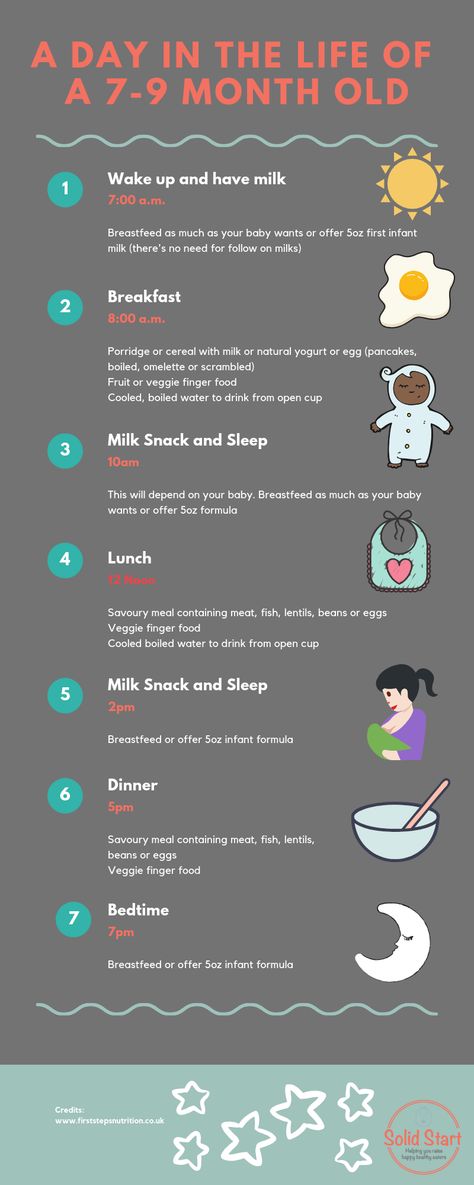 There is no “should”, since breast milk/formula provides all of the necessary nutrients for your baby until 1 year of age. The amount they will actually consume varies widely from child to child, especially with Baby Led Weaning.
There is no “should”, since breast milk/formula provides all of the necessary nutrients for your baby until 1 year of age. The amount they will actually consume varies widely from child to child, especially with Baby Led Weaning.
One of the key things about Baby Led Weaning is that baby is able to regulate his own appetite. You’ll notice that breast milk or formula is always offered prior to solid foods in this schedule. This is because, as noted above, breast milk/formula is baby’s primary source of nutrition until his first birthday.
When is Baby Done Eating?Offer small amounts of food at a time and watch baby for signs of fullness. If baby slows eating or starts throwing food on the floor, this is a signal that he’s had enough. Because babies can get overwhelmed easily, I like to offer one piece of food at a time. Aside from keeping baby focused, this also ensures you are paying adequate attention to baby throughout mealtime.
At 6 months, baby will likely not consume very much food and that’s okay. The main goal at this age is to get your little one started with self-feeding and have her learn to move food around in the mouth and begin chewing. Yes, baby can chew without teeth! Offer a bit at a time until your baby seems satisfied, or until she starts throwing food on the floor! Keep in mind, baby’s schedule at 6 months is very flexible. 3 meals a day are not required at this age, and you can opt to only offer solids in the morning or evening if you prefer (see schedule above). If baby seems a bit hungrier and is really taking to eating solids right away, go ahead and move to 2 solid meals a day. Follow your baby’s lead!
The main goal at this age is to get your little one started with self-feeding and have her learn to move food around in the mouth and begin chewing. Yes, baby can chew without teeth! Offer a bit at a time until your baby seems satisfied, or until she starts throwing food on the floor! Keep in mind, baby’s schedule at 6 months is very flexible. 3 meals a day are not required at this age, and you can opt to only offer solids in the morning or evening if you prefer (see schedule above). If baby seems a bit hungrier and is really taking to eating solids right away, go ahead and move to 2 solid meals a day. Follow your baby’s lead!
It’s tough to pinpoint an exact number of ounces of milk your baby should be drinking whether it be breast milk or formula since babies appetites vary. A good estimate is approximately 2.5 oz. of milk per pound of body weight. So if your baby weighs 12 lbs. they would need approximately 30 oz. of milk per day. The general rule is to not exceed 32 oz. of milk per day. This will gradually decrease as baby starts to eat more and more solids. Babycenter has a great guide to regulating milk intake here.
of milk per day. The general rule is to not exceed 32 oz. of milk per day. This will gradually decrease as baby starts to eat more and more solids. Babycenter has a great guide to regulating milk intake here.
If you want more individualized advice, feel free to contact me and set up a free consultation to discuss your child! Every baby is different and feeding is not a one-schedule-fits-all activity.
A Note about Nighttime Feedings:In an ideal world baby will sleep from 7pm-7am without feeding, but more than likely your little one will still be up once or twice a night to feed, especially if you are breastfeeding. Discuss with your pediatrician whether your baby is ready to drop these nighttime feedings and ask about sleep training techniques you can employ to get her sleeping through the night (if she isn’t already).
The 9-Month Shift:At around 9 months of age, baby will likely be eating with more purpose.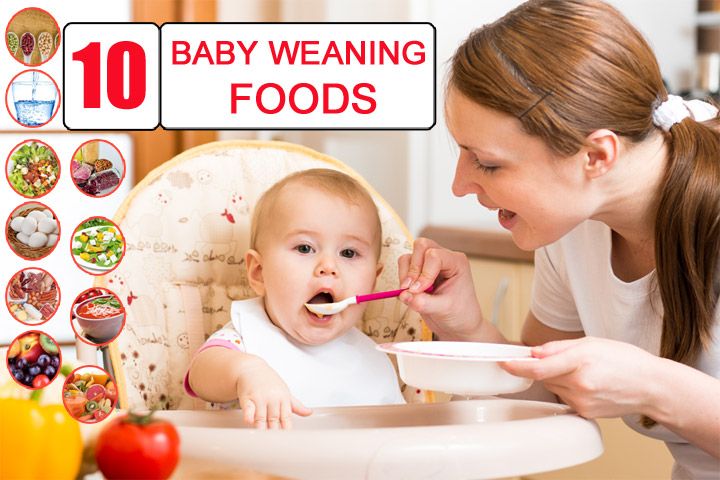 By this time, he has developed the “pincer grasp” and is able to pick up small pieces of food with thumb and forefinger. This usually means the mess will lessen (a bit!) since he is able to pick up one piece of food at a time and deliver it to his mouth. Foods like blueberries, peas, and diced carrots are great to offer and will help him to master this skill.
By this time, he has developed the “pincer grasp” and is able to pick up small pieces of food with thumb and forefinger. This usually means the mess will lessen (a bit!) since he is able to pick up one piece of food at a time and deliver it to his mouth. Foods like blueberries, peas, and diced carrots are great to offer and will help him to master this skill.
9 months of age usually means baby is now only taking 2 naps per day and has started to eat more solids and drink less milk. I still think it’s a good idea to offer the same amount of milk and let baby regulate what he consumes. Take note of how much you have left over and reduce feeds over time as needed. If you’re breastfeeding, baby will shorten feeds naturally over time.
What do you think?
Did you find these Baby Led Weaning Sample Schedules helpful? Let me know! I’d love to hear from you. Have you tried Baby Led Weaning with your children? What sort of schedules did you adhere to during the first year? Share your experience in the comments below! I’m sure other moms would greatly benefit from your experience.
WHO recommendations for the introduction of complementary foods
08.08.2019
Readiness of the child to complementary foods According to the WHO recommendation, existing for 2018, it is optimal to introduce complementary foods to an infant at 6-8 months. Until six months, the baby's gastrointestinal tract is still not sufficiently formed, all the necessary enzymes are not produced for the assimilation of food other than mother's milk or formula. And by 9-10 months, the child can already form stable stereotypes of eating only liquid food, and overcoming them will be painful and difficult for the baby.
Thus, WHO defines the following signs of a child's readiness for the introduction of complementary foods: the maturity of the digestive system; extinction of the solid food ejection reflex; the appearance of the first teeth, making it possible to chew; the readiness of the baby to be stable in an upright position; emotional readiness for new tastes and sensations.
Complementary feeding system WHO has developed recommendations for three complementary feeding options: cereals, vegetables, and meat.
Fruit complementary foods are not recommended for cereals and vegetables. This is due to the fact that up to 8-9 months the gastrointestinal tract of the baby is not ready for the absorption of raw fruits and fruit juices. It is vegetables and cereals that will populate the intestines with the necessary bacteria for the absorption of fruits.
Kefir, according to the WHO, is not considered complementary foods because it is not a solid food. The WHO complementary feeding scheme includes kefir only as an additional food from 8 months. The introduction of cow's milk is recommended by WHO only from 12 months.
Any complementary feeding scheme assumes that portions of complementary foods will systematically increase from half a teaspoon to 100-200 g. The first dishes for complementary foods are prepared exclusively with one-component. Each next component is introduced only after complete addiction to the previous one (6-7 days).
Each next component is introduced only after complete addiction to the previous one (6-7 days).
Product sequence
The following sequence of introduction of complementary foods is proposed.
- Vegetables at 6 months.
- Porridges on the water (oatmeal, buckwheat, corn) at 6.5 - 7 months.
- Fruit puree, yolk at 8 months.
- Milk porridge at 8-9 months.
- Meat puree at 9 months.
- Meat by-products at 9-10 months.
- Kefir, cottage cheese, yogurt at 9-10 months.
- Fish at 10 months.
- Juice at 10-12 months.
- Berry puree at 12 months.
- Meat broths at 12 months.
The introduction of vegetable oil (olive, sunflower) in puree and porridge is allowed from 6 months: a scheme with 1 drop with a gradual increase to a volume of 1 teaspoon. The introduction of butter begins at 7 months: the scheme is from 1 g to 10 g in porridge.
For formula-fed babies, the first feeding schedule is similar, with a few exceptions. For these babies, it is better to introduce complementary foods from 5 months, because the milk mixture does not give the small body all the “building material”. The introduction of complementary foods differs only in terms: vegetable purees and cereals are introduced a month earlier.
First cereals
If the child's weight is significantly less than normal, WHO recommends starting complementary foods with non-dairy cereals. For babies, cereals are prepared only with non-dairy, unsalted, semi-liquid, absolutely homogeneous in consistency. The first cereals are prepared from cereal flour (the sorted and washed cereals are carefully ground and crushed).
The following sequence of introduction of cereals is proposed: buckwheat, rice, corn, oatmeal, semolina. It is recommended to cook semolina porridge only once a week, because it contains practically no nutrients, but it is rich in gluten, which can cause problems in the intestines. Proportion for the preparation of the first porridge: 5 g of cereal flour per 100 ml of water. After slightly cooling the finished porridge, chop again. In the finished porridge, you can add 1-2 drops of vegetable oil or a little expressed breast milk.
Proportion for the preparation of the first porridge: 5 g of cereal flour per 100 ml of water. After slightly cooling the finished porridge, chop again. In the finished porridge, you can add 1-2 drops of vegetable oil or a little expressed breast milk.
From 9 months, the baby's nutrition system involves multicomponent cereals, from products already well known to the child. You can already add vegetables and fruits familiar to the baby to cereals. At 9 months, it is allowed to cook barley and millet porridge for babies. And by 10-11 months, cereals on the water will be a great addition to meat and fish meatballs and steam cutlets.
Vegetable food
The first purees are made from one vegetable.
The sequence of introducing vegetables into complementary foods for babies suggests the following order: zucchini, cauliflower, pumpkin, potatoes, carrots, green peas, beets. These vegetables are introduced within 6-9baby months. After 1 year, you can give your child cucumbers, eggplants, tomatoes, sweet peppers, white cabbage.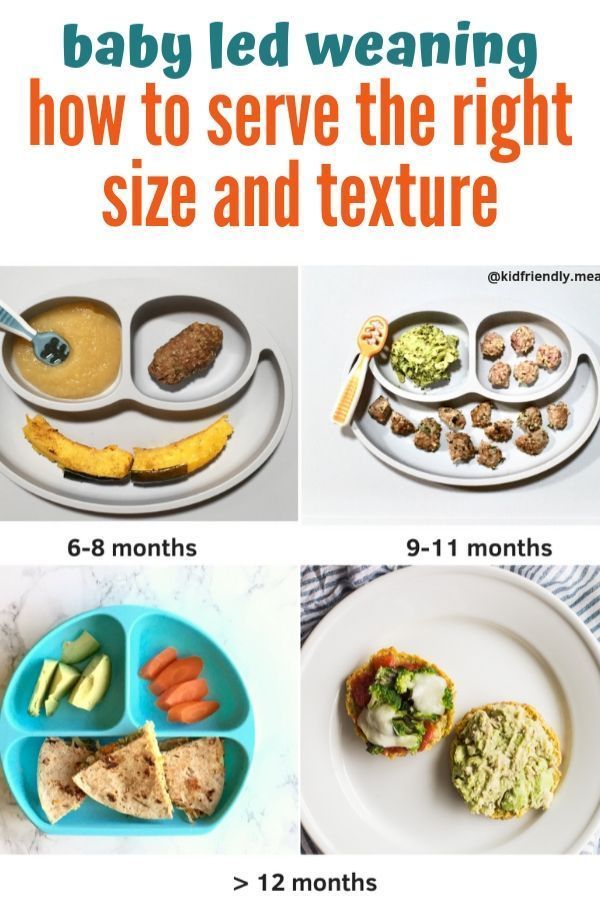 After preparing the puree, make sure that the mass is completely homogeneous, there are no fibers and small particles, the consistency is semi-liquid. Don't salt. Add 1-2 drops of vegetable oil or expressed milk.
After preparing the puree, make sure that the mass is completely homogeneous, there are no fibers and small particles, the consistency is semi-liquid. Don't salt. Add 1-2 drops of vegetable oil or expressed milk.
If the child refuses vegetable complementary foods, cancel this product for 1-2 weeks. Try to temporarily replace it with another and return to it after a while.
Meat supplements
From 9 months old, the first meat purees are recommended for babies. The first courses are recommended to be prepared from lean meats: rabbit; quail; turkey; chicken.
Complementary foods for a 6-month-old baby are recommended to be introduced in the morning. This will allow you to track the child's reaction to an unfamiliar product before a night's sleep: is there a rash, intestinal disorders, anxiety in the baby, profuse regurgitation. It is better to give vegetables or porridge first, and then saturate with breast milk or formula. Gradually, porridge and a vegetable dish will replace one full meal. The dish must be warm and freshly cooked. Gradually, by the age of 1, your baby will develop taste preferences. You will know what dishes he eats with pleasure. In the meantime, try to fully expand the child's diet with products necessary for growth and development.
The dish must be warm and freshly cooked. Gradually, by the age of 1, your baby will develop taste preferences. You will know what dishes he eats with pleasure. In the meantime, try to fully expand the child's diet with products necessary for growth and development.
Be healthy!!!
Complementary feeding schedule | Nutriclub
Regardless of whether your child is receiving breast milk or infant formula, at about six months of age, according to WHO* recommendations, the first complementary foods should be introduced. But where to start feeding? And how to do it right? Let's talk in order.
It is at the age of 6 months that the baby's body responds best to new foods. The first complementary foods in combination with breast milk should provide the child with all the useful substances necessary for his growth and development. Also, the timely introduction of complementary foods contributes to the development of the chewing skills of the baby. Russian pediatric practice also allows for earlier introduction of complementary foods - from 4-5 months **.
Russian pediatric practice also allows for earlier introduction of complementary foods - from 4-5 months **.
How many months to introduce complementary foods?
To know when it's time to consider introducing food other than milk or formula, watch for signs of complementary feeding. It's time to start complementary foods if:
- The baby sits with support, does not roll over on its side
- The child shows food interest: follows the spoon with his eyes when you eat, tries to steal something from your plate
- Ejection reflex faded, child opens mouth when offered food
Consult your paediatrician before introducing complementary foods. And in order to introduce complementary foods correctly, read the complementary feeding scheme below.
Rules for the introduction of complementary foods
- All new products are introduced with ½ teaspoon and then gradually adjusted to the age norm.
- New products are best given in the morning or afternoon to be able to track the reaction throughout the day.

- Do not introduce a new product until the previous one has been brought to the age norm.
- Complementary foods are offered before feeding with breast milk or its substitute.
- Until the volume of the product per feeding is brought to the age norm, you should continue to supplement the baby with breast milk or infant formula. Thus, the volume of the complementary food product will gradually increase, and the volume of milk or formula, on the contrary, will decrease until it completely disappears.
Complementary feeding scheme
| Age | Foods and portion sizes |
| 4-5 months | Complementary foods at this early age should be introduced if the child is not gaining weight well or is at risk of developing iron deficiency anemia. Complementary foods are introduced to healthy children from 5 months. There are a number of contraindications for an early start of complementary foods, consult your pediatrician! What foods can we start with:
|
| 6 months | What foods should be in the baby's diet if you introduced complementary foods at 5 months:
What new products are introduced into the diet:
|
| 7 months | What foods should be in the baby's diet by the end of the 7th month:
What new products are introduced into the diet:
|
| 8 months | What foods should be in the baby's diet by the end of the 7th month:
What new products are introduced into the diet:
|
| 9-12 months | What foods should be in the diet of a child at this age:
What new products are introduced into the diet:
|
After 9-12 months volumes of previously introduced products will continue to increase, but remember that the older the child, the more pronounced the individual characteristics, therefore, the food needs of children at this age may differ.
Focus on your baby's weight gain, appetite, and your own common sense.
If you think your child is malnourished or is not gaining weight well, consult a pediatrician.
When using any materials from the site nutriclub.ru, a link to the site is required.
© Nutriclub, 2020
You will also be interested
- Learn more
- Food options for 11 month old baby

- When is the best time to give baby solid foods

- At what age can babies have baby food

- Can babies eat honey cooked in food

- At what age can babies have baby food

- Can babies eat honey cooked in food

- Will a baby burp after every feeding

- Mouse feeding babies

- What do you feed a baby chihuahua

- At what age can babies have baby food

- Can babies eat honey cooked in food
